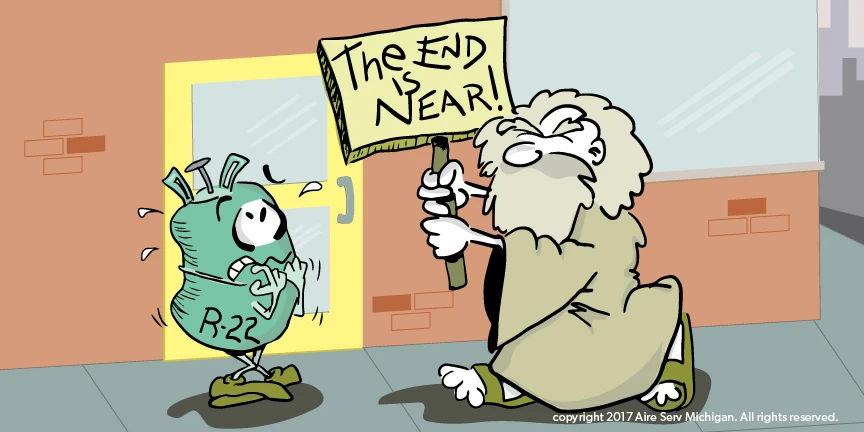
R-22 Refrigerant is Rapidly being Phased-Out - What You Need to Know
Commonly referred to as Freon, R-22 refrigerant has been used commercially in air conditioning since 1932. Chlorofluorocarbons (CFC’s), including R-22, contribute to depletion of the Earth’s upper atmosphere - the ozone layer. The Montreal Protocol was enacted in 1987, calling for the worldwide manufacturing phase-out of CFC’s.
This happened a pretty long time ago. Why is it important now?
The EPA and Congress, in accordance with the Clean Air Act, have accelerated the phase-out of R-22. By 2020, manufacturing R-22 will be illegal. Perfectly serviceable cooling equipment may become economically obsolete as the cost of replacement refrigerant skyrockets - scarcity causes price increases. This is all by government design and international agreement. The calculation between repair and replacement will be driven by these rapidly increasing costs.
R-410A is predominantly the preferred replacement refrigerant for R-22. First used in 1996 for residential air conditioning, R-410A is now widely used in both commercial and residential applications. There is a growing number of alternatives - 417A, 422A 507, 407C, etc. - and new compounds are still being developed. However, given the lifespan of most equipment and the phase-in of R-410A, there are a lot of businesses and homes still relying on R-22.
Unfortunately, it is not possible to upgrade cooling systems from R-22 to R-410A. There is an incompatibility between the two which can’t be rectified.
We’re making the following recommendations to our customers, both commercial and residential:
- Determine which refrigerant your cooling system uses. If R-410A, rest easy and continue to have normal maintenance performed.
- If your equipment is old enough to use R-22, have your equipment serviced now and start saving for a replacement air conditioning system. The industry standard is a 15-20 year lifespan, although it may last longer when properly maintained. A cooling system using R-22 is most likely at, or nearing, the end of its service life.
- Depending on cost and age, consider replacing rather than repairing. The money spent now on repair may be wasted when viewed against ongoing, escalating prices.
Planning and being proactive is your best bet at this point. Know whether this change is an issue for you. If you have any questions, feel free to drop me a line. If you’re outside of the mid-Michigan or West Michigan area, contact your local mechanical contractor or HVAC professional.

